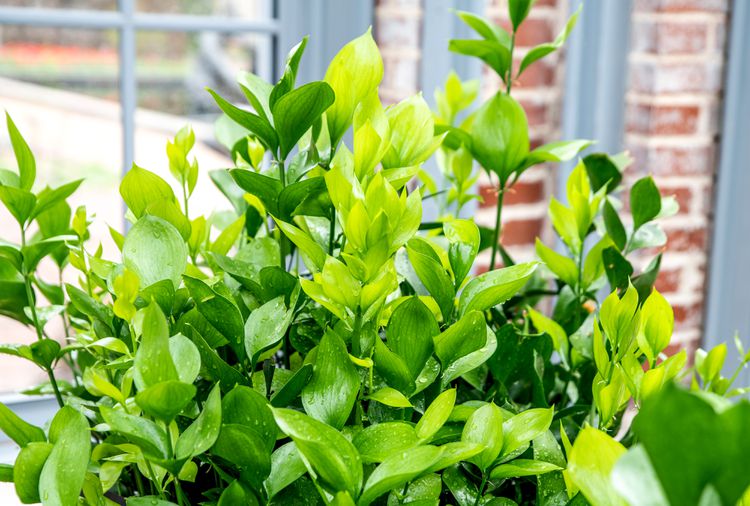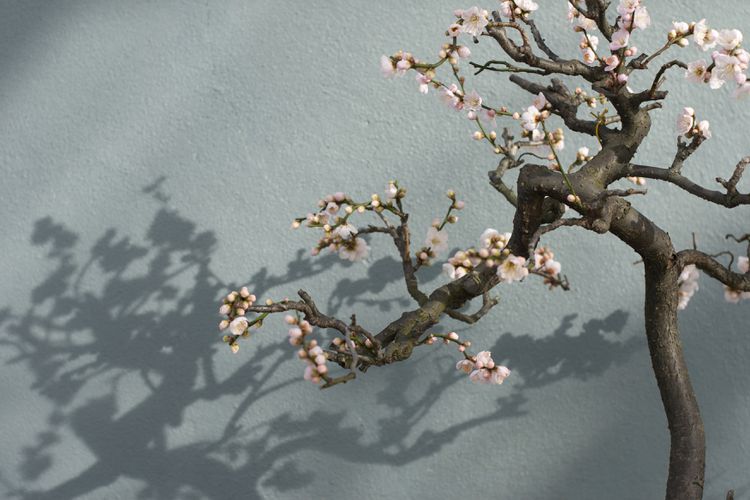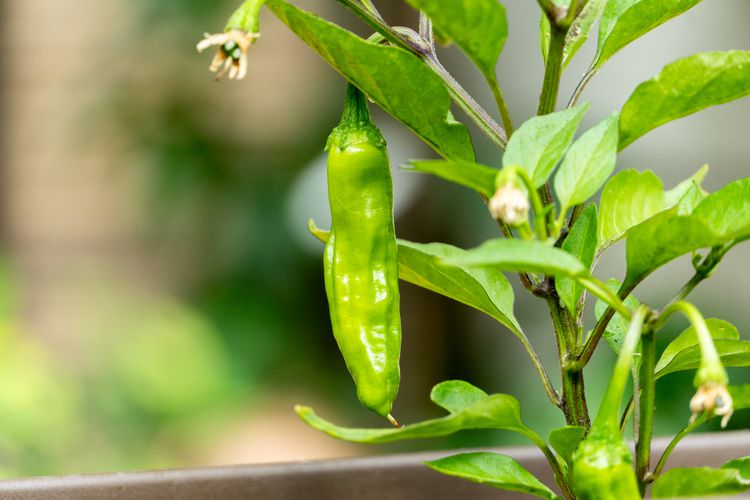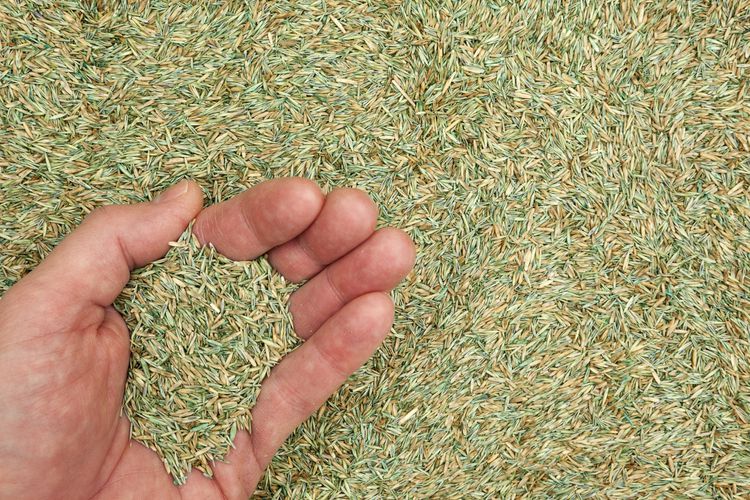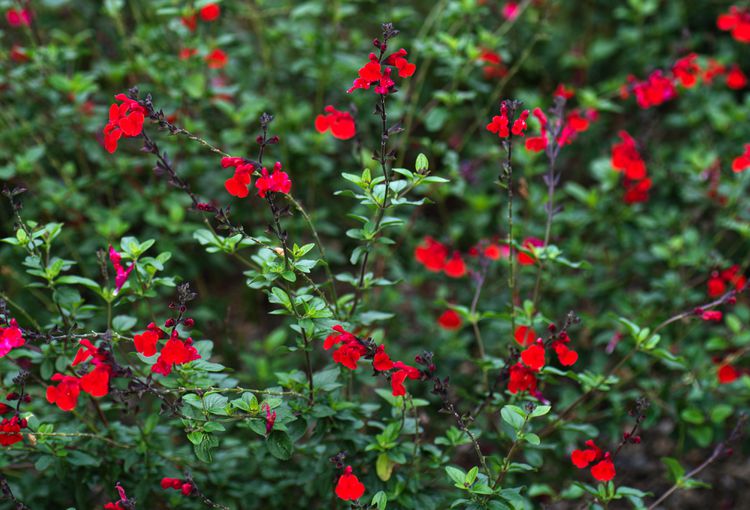
Autumn sage, often referred to as Texas sage, is a perennial shrub belonging to the mint family, known for its abundant blooms from early summer to mid-fall, which draw in various pollinators. This plant flourishes in full sunlight and well-drained soil, making it a perfect choice for xeriscape gardens and rocky terrains. Additionally, autumn sage is resilient to salt and is not favored by deer.
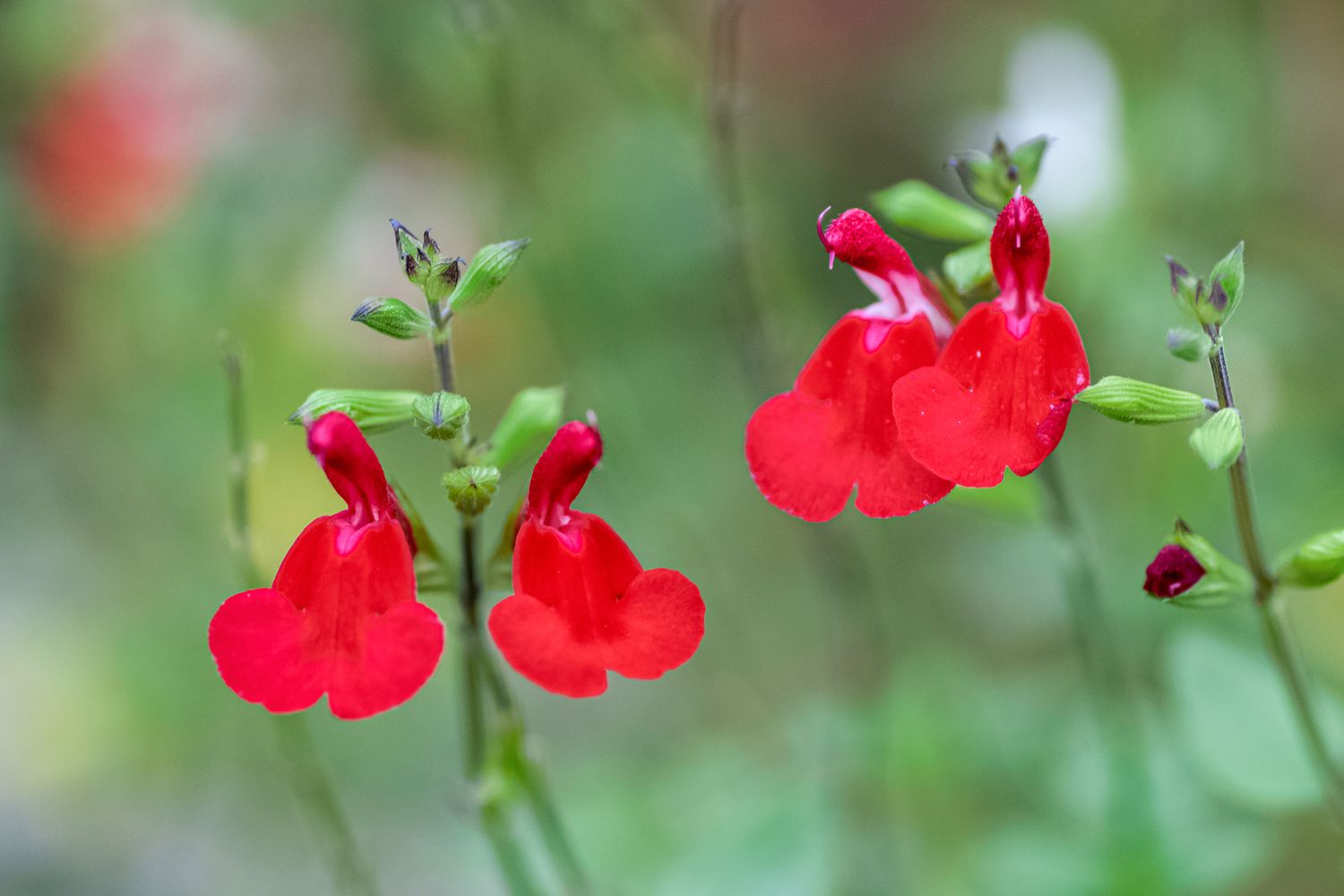
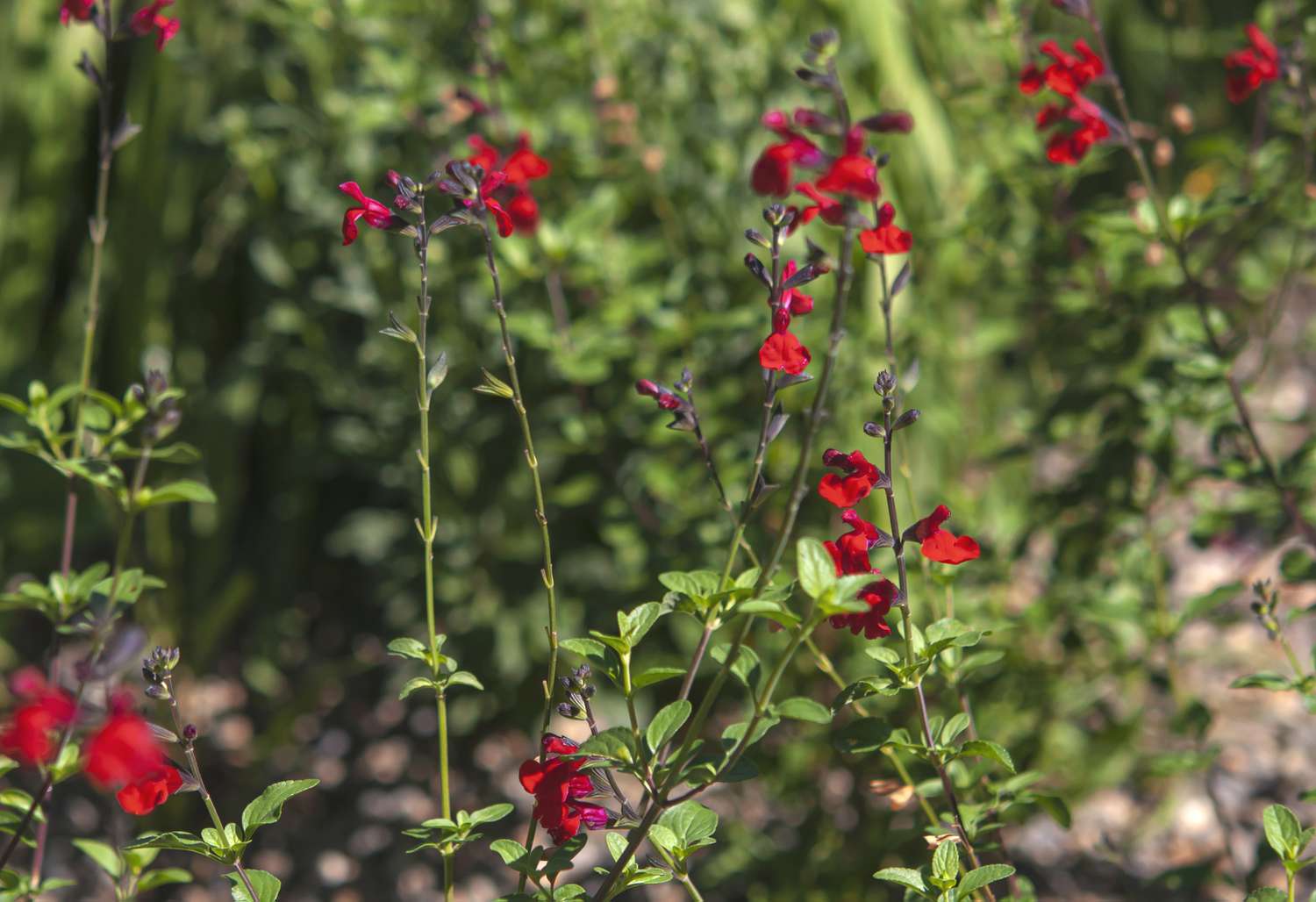
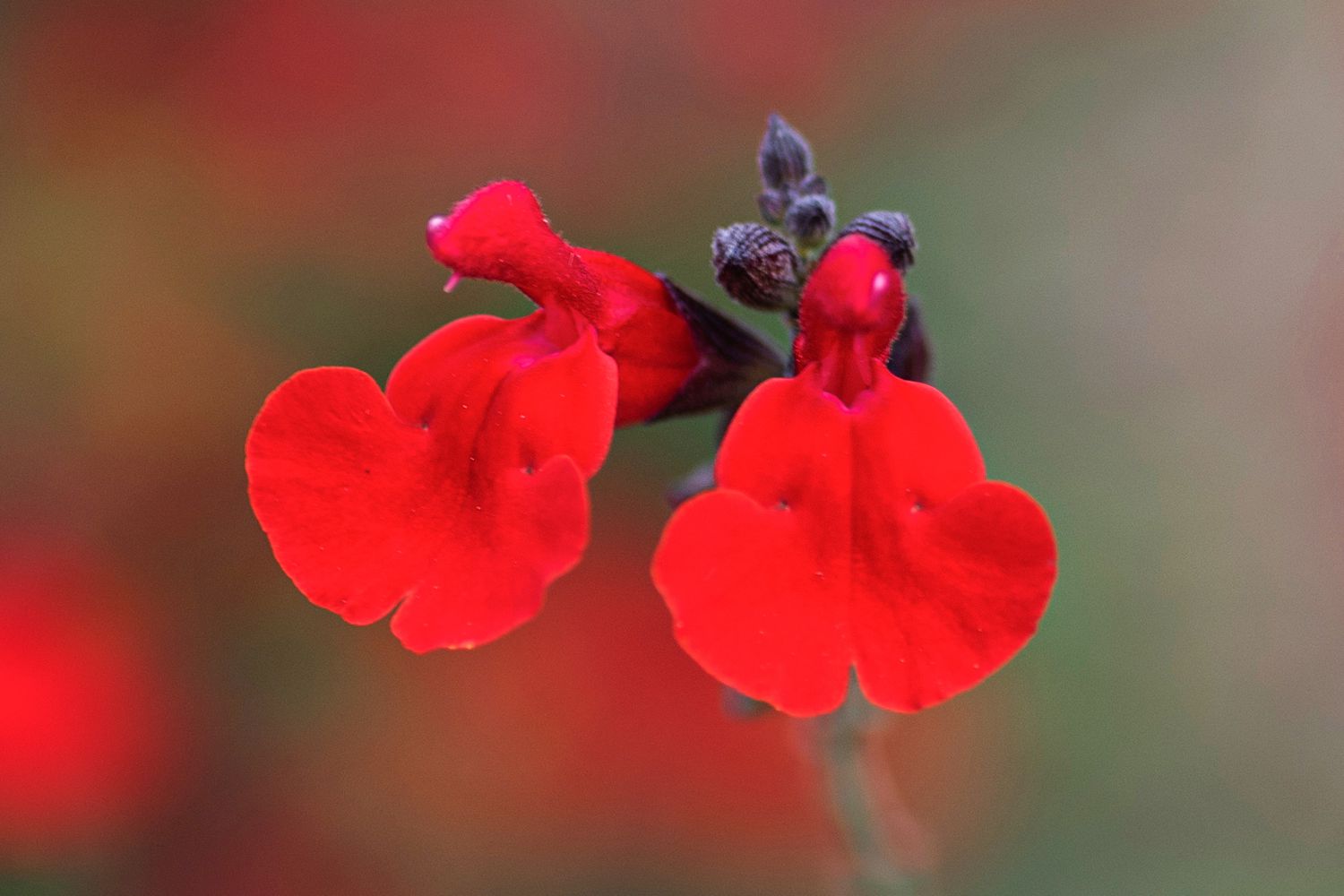
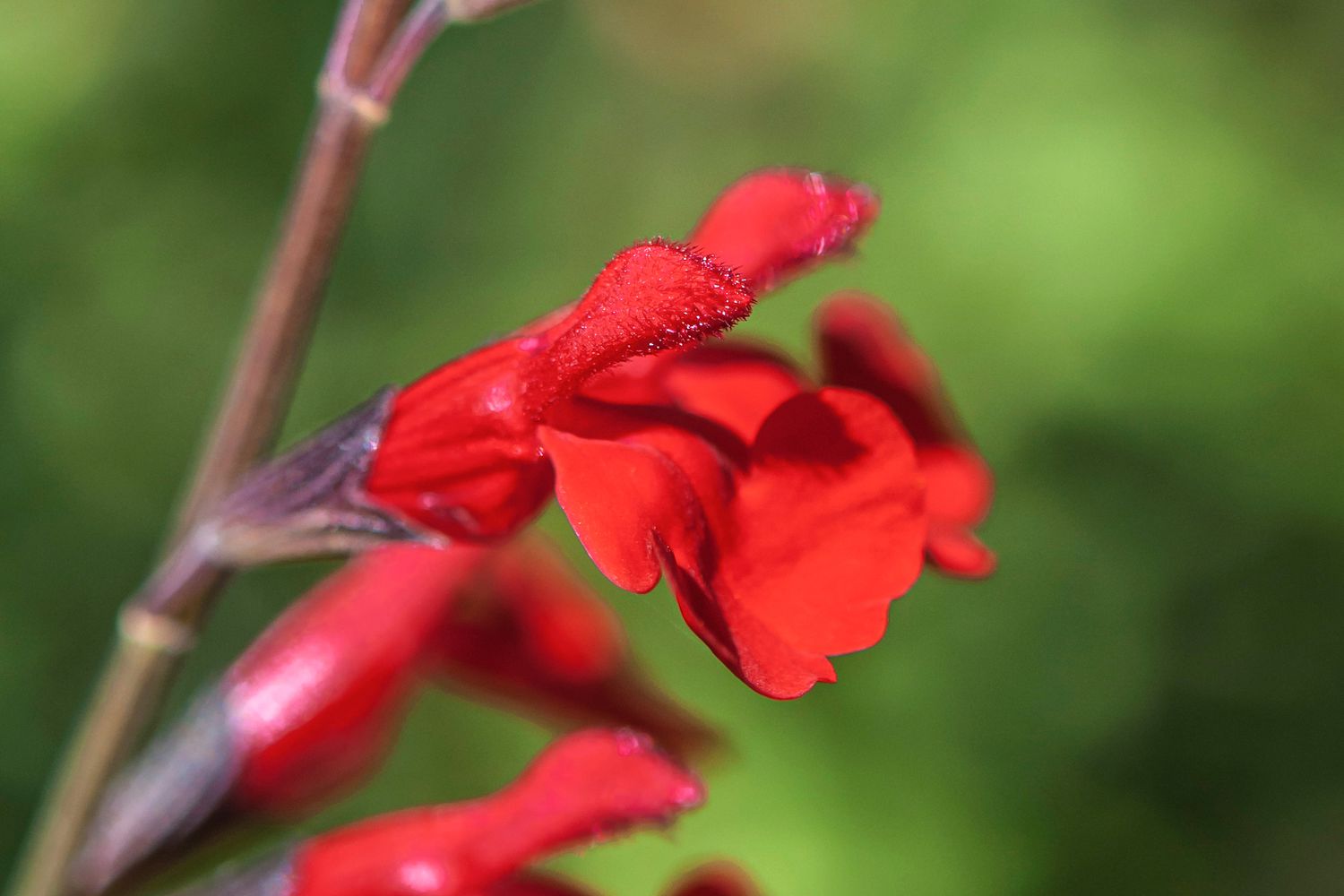
Light
In many areas, this plant flourishes best in full sunlight, although in extremely hot climates, it benefits from some shade during the hottest parts of the day.
Soil
Provide the plant with soil that is moderately fertile and drains well. Autumn sage thrives in gravelly and rocky conditions, but it may struggle in heavy clay soil.
Water
Water the plants consistently after they have been planted. Once they are established, they typically need only moderate watering, which should not exceed 1 inch per week. Avoid excessive watering, as in many areas, natural rainfall is sufficient.
Similar to many varieties of salvia, autumn sage does not thrive in overly wet conditions. If the soil in your garden does not provide the right drainage, think about using a container for planting or creating a xeriscape garden.
Heat and Moisture Levels
Originating from southern Texas, New Mexico, and Mexico, this variety of salvia is well-suited to withstand heat, humidity, and dry conditions. Autumn sage is typically resilient down to approximately 15 degrees Fahrenheit, with colder temperatures posing a risk of harm or death to the plants. In milder regions (zones 8 and 9), autumn sage often retains its leaves throughout the winter, while in cooler areas (zones 6 and 7), it tends to lose its foliage.
Fertilizer
All sage varieties are light feeders, and autumn sage follows this pattern. If your soil has a moderate level of fertility, you might not need to provide any extra nutrients. If you choose to, a small amount of balanced slow-release fertilizer can be applied around the plant’s base each spring.
Varieties of Autumn Sage
Numerous varieties of autumn sage exist, each exhibiting comparable forms and growth patterns, yet showcasing a range of flower colors.
- S. greggii ‘Wild Thing’ is a popular cold-tolerant variety known for its vibrant hot pink blooms.
- S. greggii ‘Radio Red’ boasts the most vibrant shade of red among all varieties.
- S. greggii ‘Elk Pomegranate’ features blossoms in a vibrant raspberry hue.
- S. greggii ‘Glimmer Heatwave’ features pristine white blossoms.
- S. greggii ‘Ignition Purple’ is a newly introduced variety featuring vibrant purple blooms.
- S. greggii ‘Furman’s Red’ is yet another vibrant red variety.
- S. greggii ‘Lowrey’s Peach’ features blossoms in a rosy orange hue, complemented by yellow centers.
- S. greggii ‘Playa Rosa’ features beautiful pink blossoms with a delightful two-tone effect.
Pruning
Shearing the plants early in the season to cut off roughly one-third of the stem length will result in a bush that is lush and thick, although it may postpone the initial flowering a bit.
Throughout the growing season, you can selectively cut back individual branches to the main stems to maintain a full and well-shaped shrub. As the growing season concludes, it is advisable to perform a significant pruning, reducing the shrub to just above the ground. This practice promotes vigorous and rapid regrowth in the upcoming spring.
Cultivating Autumn Sage
Autumn sage is most effectively propagated using softwood cuttings or by dividing the roots. Both stem cuttings and root divisions can lead to flowering plants within the first year.
To propagate autumn sage using softwood cuttings, follow these steps:
- During late summer or autumn, take sharp pruning shears to snip 3 to 4 inches off the ends of stems that are actively growing but not in bloom. Trim away all but the top two leaves on each cutting.
- Prepare 4-inch pots by combining standard potting soil with sand or vermiculite. Apply rooting hormone to the cut ends of the cuttings and place them into the pots.
- Water the cuttings well, then cover each pot with a loosely tied plastic bag to retain humidity and moisture.
- Position the pots in a well-lit area that is not exposed to direct sunlight, maintaining a temperature of around 68 degrees Fahrenheit, until roots begin to form, which typically takes around three weeks.
- Take the pots out of the bags and keep nurturing the new plants in a bright spot throughout the winter. You can move your autumn sage plants to the garden in the spring when the daytime temperatures consistently reach 70 degrees Fahrenheit or above.
Methods for propagation via root division:
- Separate the roots in early spring when the stems that have survived the winter are just starting to open their leaves.
- Excavate the complete root system using a spade.
- Gently split the root ball into four sections using a sterilized sharp knife or trowel.
- Replant the divisions right away in different locations.
- Ensure that newly planted sections receive ample water until they are fully established and showing signs of active growth.
Growing Autumn Sage from Seeds: A Step-by-Step Guide
Growing plants from seeds takes significantly more time compared to methods like cuttings or division. Follow these simple steps to get started:
- Gather the seed pods that emerge once the blossoms have withered.
- Allow the seed pods to dry and then carefully split them apart to gather the seeds contained within.
- Begin by planting the seeds indoors in containers filled with a commercial potting mix combined with sand.
- Maintain moisture in the pots and place them in a well-lit area until germination occurs in approximately three weeks.
- The young plants need to be cared for a bit longer until they look strong enough to be moved to the garden. Additionally, seeds can be planted directly in the garden once the final frost of the winter season has passed.
Transplanting and Replanting
While it may not be typical, it is entirely feasible to cultivate autumn sage in a container on a patio or deck. Ensure you select a gritty, well-draining potting mix, often a combination of potting soil and sand, and use a sizable pot equipped with adequate drainage holes. However, this plant does not thrive as a houseplant and struggles to adjust to frequent transitions between indoor and outdoor environments.
Frequent Insects and Plant Illnesses
Autumn sage requires minimal upkeep and generally does not present significant problems. Nevertheless, it’s important to be vigilant for certain pests, such as leafhoppers, slugs, snails, rosemary beetles, whiteflies, and aphids. Keeping the area dry, utilizing horticultural soaps, and applying pesticides judiciously can help manage these pests effectively.
Autumn sage is generally resilient to most plant diseases; however, it can be susceptible to crown rot if it is planted in heavy, poorly draining soil. This plant particularly dislikes soggy conditions during the winter months.
Tips for Encouraging Autumn Sage to Flower
Under optimal growing conditions, autumn sage is likely to flourish and attract a variety of pollinators to your garden.
Flowering Periods
Typically, this plant exhibits a strong bloom in the spring and early summer, followed by a second, albeit less abundant, flowering in the fall, while the summer heat brings about a more limited and less vigorous flowering period.
How do the flowers of Autumn Sage appear and what fragrance do they emit?
Autumn sage showcases clusters of flowers that rise above its 2-inch green oval leaves. The flowers, which have two lips, typically come in vibrant red or bright pink, although certain varieties may display hues of purple, orange, or white. The leaves emit a delightful minty aroma, providing a fragrant experience.
Ways to Promote Increased Flowering
A selective trimming following the completion of spring blossoms can frequently encourage a remarkable resurgence of flowers.
This plant thrives in bright sunlight; placing it in shaded areas may hinder its blooming. Additionally, over-fertilization can lead to a decrease in flowers, as it often encourages leaf growth over blooming. Ideally, apply a balanced slow-release fertilizer once in the spring, as many plants can flourish without any additional feeding.
Pruning Autumn Sage Blooms
As flowers begin to fade and wither, it’s beneficial to remove them. Neglecting this task can lead to an abundance of self-sown plants. This species tends to self-seed abundantly, making it perfect for those looking to encourage the spread of autumn sage.
Frequent Issues Encountered with Autumn Sage
Autumn sage is generally a low-maintenance plant; however, you might encounter a few potential concerns:
Leaves Change to Yellow
Although it may be tempting to increase watering during periods of heat, these plants can only handle approximately 1 inch of water weekly. If you experience consistent rainfall, extra watering is typically unnecessary. Excessive moisture can lead to yellowing of the leaves.
Leaves Change Color to Brown and Fall Off
In extremely hot regions, autumn sage may suffer from sunburn if exposed to excessive direct sunlight. Extended temperatures exceeding 110 degrees Fahrenheit can damage the plants, so it’s advisable to cultivate autumn sage in areas that provide some shade during the peak afternoon heat.
Drooping Foliage and Stalks
Autumn sage can suffer from wilting if it receives too much water or if it is watered too heavily at inappropriate times. The ideal time for watering is in the morning, as watering in the afternoon can lead to rapid evaporation, increasing humidity around the plant and resulting in wilting.
What is the ideal location in my garden for planting autumn sage?
Autumn sage thrives in arid, sunlit border gardens and as part of foundation plantings. It is also an excellent choice for native wildflower gardens and rock or gravel landscapes. Additionally, it can be successfully grown in containers for bright patios or courtyards.
Do pollinators find autumn sage appealing?
Autumn sage, known for its extended flowering period and fragrant aroma, is a beloved choice for bees, butterflies, and hummingbirds.
What is the reason for referring to autumn sage as a “subshrub”?
The word “subshrub” typically refers to plants characterized by woody stems at the base that are resilient to cold temperatures, while the upper portions of the plant die back during the winter months. Common examples of subshrubs include various species of sage, as well as lavender and thyme.
Does autumn sage return annually?Autumn sage will reappear annually in regions where it is a perennial plant, specifically in USDA hardiness zones 6 to 9.

